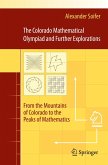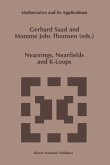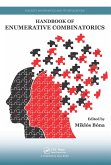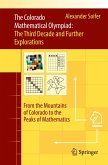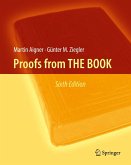How Does One Cut a Triangle? is a work of art, and rarely, perhaps never, does one find the talents of an artist better suited to his intention than we find in Alexander Soifer and this book.
-Peter D. Johnson, Jr.
This delightful book considers and solves many problems in dividing triangles into n congruent pieces and also into similar pieces, as well as many extremal problems about placing points in convex figures. The book is primarily meant for clever high school students and college students interested in geometry, but even mature mathematicians will find a lot of new material in it. I very warmly recommend the book and hope the readers will have pleasure in thinking about the unsolved problems and will find new ones.
-Paul Erdös
It is impossible to convey the spirit of the book by merely listing the problems considered or even a number of solutions. The manner of presentation and the gentle guidance toward a solution and hence to generalizations and new problems takes this elementary treatise out of the prosaic and into the stimulating realm of mathematical creativity. Not only young talented people but dedicated secondary teachers and even a few mathematical sophisticates will find this reading both pleasant and profitable.
-L.M. Kelly
Mathematical Reviews
[How Does One Cut a Triangle?] reads like an adventure story. In fact, it is an adventure story, complete with interesting characters, moments of exhilaration, examples of serendipity, and unanswered questions. It conveys the spirit of mathematical discovery and it celebrates the event as have mathematicians throughout history.
-Cecil Rousseau
The beginner, who is interested in the book, not only comprehends a situation in a creative mathematical studio, not only is exposed to good mathematical taste, but also acquires elements of modern mathematical culture. And (not less important) the reader imagines the role and place of intuition and analogy in mathematical investigation; he or she fancies the meaning of generalization in modern mathematics and surprising connections between different parts of this science (that are, as one might think, far from each other) that unite them.
-V.G. Boltyanski
SIAM Review
Alexander Soifer is a wonderful problem solver and inspiring teacher. His book will tell young mathematicians what mathematics should be like, and remind older ones who may be in danger of forgetting.
-John Baylis
The Mathematical Gazette
-Peter D. Johnson, Jr.
This delightful book considers and solves many problems in dividing triangles into n congruent pieces and also into similar pieces, as well as many extremal problems about placing points in convex figures. The book is primarily meant for clever high school students and college students interested in geometry, but even mature mathematicians will find a lot of new material in it. I very warmly recommend the book and hope the readers will have pleasure in thinking about the unsolved problems and will find new ones.
-Paul Erdös
It is impossible to convey the spirit of the book by merely listing the problems considered or even a number of solutions. The manner of presentation and the gentle guidance toward a solution and hence to generalizations and new problems takes this elementary treatise out of the prosaic and into the stimulating realm of mathematical creativity. Not only young talented people but dedicated secondary teachers and even a few mathematical sophisticates will find this reading both pleasant and profitable.
-L.M. Kelly
Mathematical Reviews
[How Does One Cut a Triangle?] reads like an adventure story. In fact, it is an adventure story, complete with interesting characters, moments of exhilaration, examples of serendipity, and unanswered questions. It conveys the spirit of mathematical discovery and it celebrates the event as have mathematicians throughout history.
-Cecil Rousseau
The beginner, who is interested in the book, not only comprehends a situation in a creative mathematical studio, not only is exposed to good mathematical taste, but also acquires elements of modern mathematical culture. And (not less important) the reader imagines the role and place of intuition and analogy in mathematical investigation; he or she fancies the meaning of generalization in modern mathematics and surprising connections between different parts of this science (that are, as one might think, far from each other) that unite them.
-V.G. Boltyanski
SIAM Review
Alexander Soifer is a wonderful problem solver and inspiring teacher. His book will tell young mathematicians what mathematics should be like, and remind older ones who may be in danger of forgetting.
-John Baylis
The Mathematical Gazette
Dieser Download kann aus rechtlichen Gründen nur mit Rechnungsadresse in A, B, BG, CY, CZ, D, DK, EW, E, FIN, F, GR, HR, H, IRL, I, LT, L, LR, M, NL, PL, P, R, S, SLO, SK ausgeliefert werden.
"In mathematics, and especially in geometry, there is an abundance of topics that are accessible without much previous knowledge. They present the exploring mind with opportunities to rise to that challenge, and to experience the joy of discovery. How Does One Cut a Triangle? is an excellent guide to this aspect of mathematics, apt to bring pleasure to anybody willing to devote a few hours to follow its adventures among solved and unsolved questions."
(Branko Grünbaum)
(Branko Grünbaum)
From the reviews of the second edition:
"In the second edition of an engagingly written book ... addressed to bright high school students and undergraduates, whose contributions are very nicely incorporated into the narrative, the author presents problems belonging to discrete and combinatorial geometry." (Victor V. Pambuccian, Zentralblatt MATH, Vol. 1180, 2010)
"How does one cut a triangle? is a charming little book intended for that most rare of readers: one with little or no knowledge of mathematics above the high school level ... . For such a reader, this book constitutes an opportunity to learn a number of mathematical tools and problem-solving techniques. ... overall there is much in this book to commend it to both expert and novice ... ." (Michael Weiss, Mathematical Reviews, Issue 2011 c)
"In the second edition of an engagingly written book ... addressed to bright high school students and undergraduates, whose contributions are very nicely incorporated into the narrative, the author presents problems belonging to discrete and combinatorial geometry." (Victor V. Pambuccian, Zentralblatt MATH, Vol. 1180, 2010)
"How does one cut a triangle? is a charming little book intended for that most rare of readers: one with little or no knowledge of mathematics above the high school level ... . For such a reader, this book constitutes an opportunity to learn a number of mathematical tools and problem-solving techniques. ... overall there is much in this book to commend it to both expert and novice ... ." (Michael Weiss, Mathematical Reviews, Issue 2011 c)



